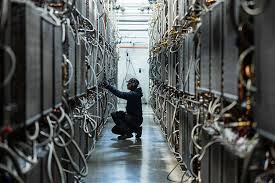
Asian Data Center Hub Struggles with Soaring Energy and Water Demands of AI

 :
| Updated On: 18-Aug-2025 @ 12:04 pm
:
| Updated On: 18-Aug-2025 @ 12:04 pmSHARE
The artificial intelligence (AI) boom has triggered massive investments, promising economic growth but demanding enormous infrastructure resources, especially energy and water. One notable example is Johor, a state in southern Malaysia, which has rapidly emerged as a key data center hub in Southeast Asia. Hosting global tech giants like Google, Microsoft, and ByteDance, Johor attracts projects worth billions due to its affordable land, abundant resources, proximity to Singapore’s financial center, and government incentives.
Despite these economic benefits, the rapid growth is straining Johor’s energy and natural resources. The state currently supports around 580 megawatts (MW) of data center capacity, but planned developments could expand this nearly tenfold, equating to the power needs of 5.7 million households. As Johor dominates Malaysia’s data center plans, other hubs are emerging across the country. The overall electricity demand for data centers is projected to reach 20% of Malaysia’s total energy generation capacity by 2035.
In response to this growth, Malaysia plans to add 6 to 8 gigawatts of gas-fired power by 2030, anticipating a 30% increase in total power consumption. Although natural gas burns cleaner than coal, which supplied 43% of Malaysia’s electricity in 2023, reliance on gas complicates the country’s net-zero emissions goal targeted for 2050. Water use is another critical issue: data centers require large quantities to cool equipment, with an average 100 MW facility consuming about 4.2 million liters daily—equivalent to the needs of thousands of residents. Johor, already dependent on treated water from Singapore and having faced supply disruptions, is building three new reservoirs and treatment plants to meet demand.
Globally, data centers underpin the digital economy, powering everything from e-commerce and social media to digital banking and AI models. The unprecedented computing needs of AI, especially after the launch of OpenAI’s ChatGPT, have sharply increased data center energy use, matching countries like Germany and France by 2023. Researchers estimate AI-related infrastructure may consume four to six times more water than Denmark by 2027.
The rapid growth faces challenges: data center construction struggles to keep pace with demand due to power limitations and permitting delays. Governments worldwide are working to accelerate approvals and add cheap energy sources, but environmentalists warn such moves might conflict with global net-zero targets. The United States, the largest data center market, exemplifies this tension. Its government, under former President Donald Trump, sought to streamline permits and ease environmental regulations to boost AI infrastructure, which a 2023 study predicted would raise U.S. electricity bills by 8% and power-related emissions by 30% by 2030.
Malaysia is taking steps to balance growth and sustainability. The government plans a “Sustainable Data Centre Framework” by October and is promoting renewable energy and exploring nuclear power. To address water issues, Johor has increased water tariffs for data centers and encourages recycling wastewater. Some new data centers have even adopted waterless cooling systems.
Regionally, Singapore imposed a moratorium on new data centers from 2019 to 2022 to curb energy and water use, prompting many companies to shift operations to Johor. Singapore has since introduced a “Green Data Centre Roadmap” to improve energy efficiency and adopt greener power, though its growth remains slower than Malaysia’s.
Environmental groups and organizations like the United Nations Environment Programme urge global legislation to regulate this rapidly expanding industry. Experts like Jonathan Koomey emphasize that AI expansion does not require abandoning climate goals; data centers should aim for zero-emission power to reconcile AI growth with sustainability.
In summary, while AI-driven data center growth offers economic opportunities, it presents significant challenges in energy and water demand. Balancing technological advancement with environmental sustainability remains a pressing global priority.